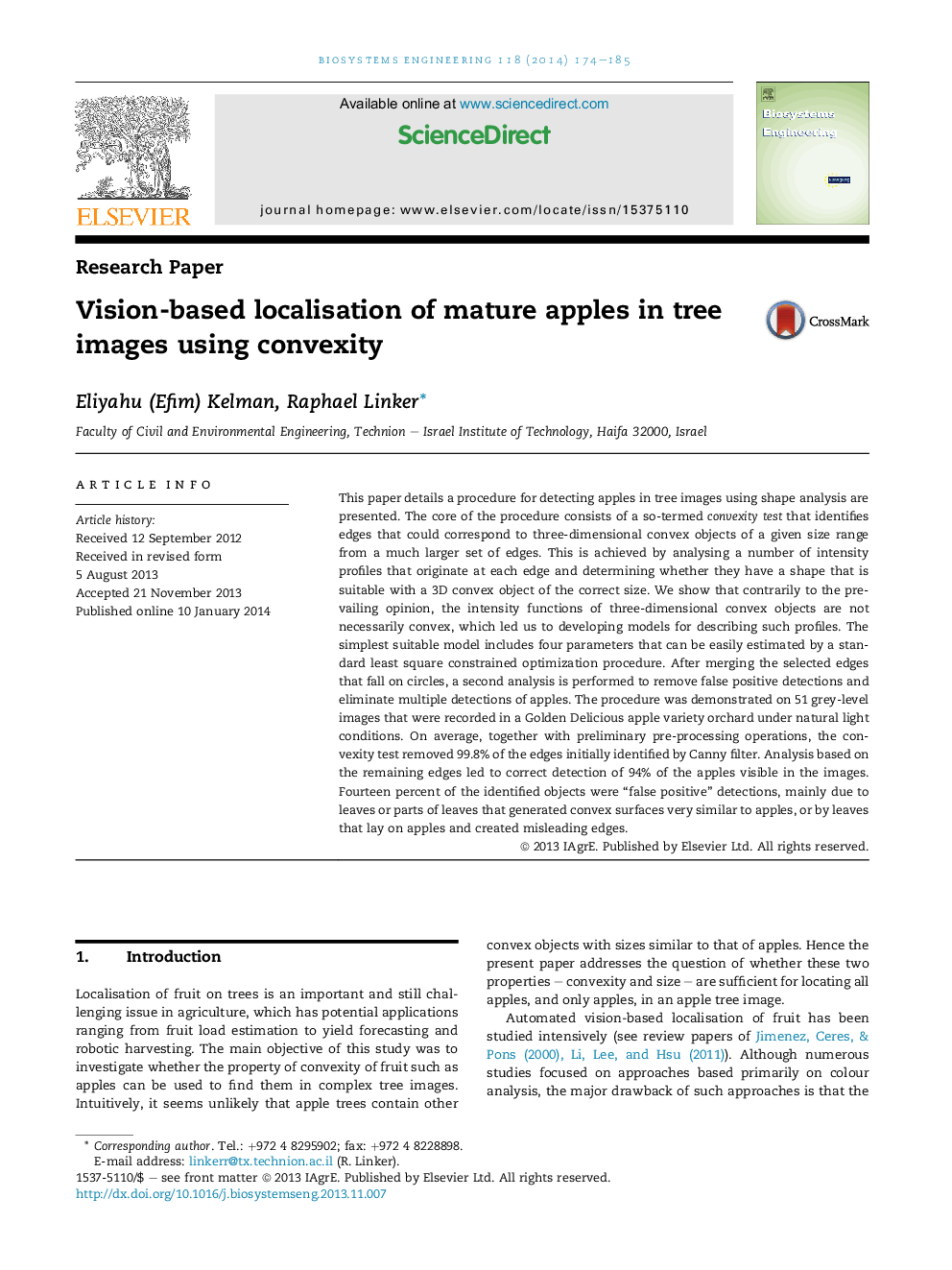| کد مقاله | کد نشریه | سال انتشار | مقاله انگلیسی | نسخه تمام متن |
|---|---|---|---|---|
| 1711219 | 1519543 | 2014 | 12 صفحه PDF | دانلود رایگان |
• Apples were detected in tree images using shape analysis.
• Models describing intensity profiles along spherical objects were developed.
• Edges belonging to spherical objects were detected by analysis of intensity profiles.
• The procedure correctly identified 94% of the apples in 51 images.
• 14% of detections were “false positives” due to leaves.
This paper details a procedure for detecting apples in tree images using shape analysis are presented. The core of the procedure consists of a so-termed convexity test that identifies edges that could correspond to three-dimensional convex objects of a given size range from a much larger set of edges. This is achieved by analysing a number of intensity profiles that originate at each edge and determining whether they have a shape that is suitable with a 3D convex object of the correct size. We show that contrarily to the prevailing opinion, the intensity functions of three-dimensional convex objects are not necessarily convex, which led us to developing models for describing such profiles. The simplest suitable model includes four parameters that can be easily estimated by a standard least square constrained optimization procedure. After merging the selected edges that fall on circles, a second analysis is performed to remove false positive detections and eliminate multiple detections of apples. The procedure was demonstrated on 51 grey-level images that were recorded in a Golden Delicious apple variety orchard under natural light conditions. On average, together with preliminary pre-processing operations, the convexity test removed 99.8% of the edges initially identified by Canny filter. Analysis based on the remaining edges led to correct detection of 94% of the apples visible in the images. Fourteen percent of the identified objects were “false positive” detections, mainly due to leaves or parts of leaves that generated convex surfaces very similar to apples, or by leaves that lay on apples and created misleading edges.
Journal: Biosystems Engineering - Volume 118, February 2014, Pages 174–185
